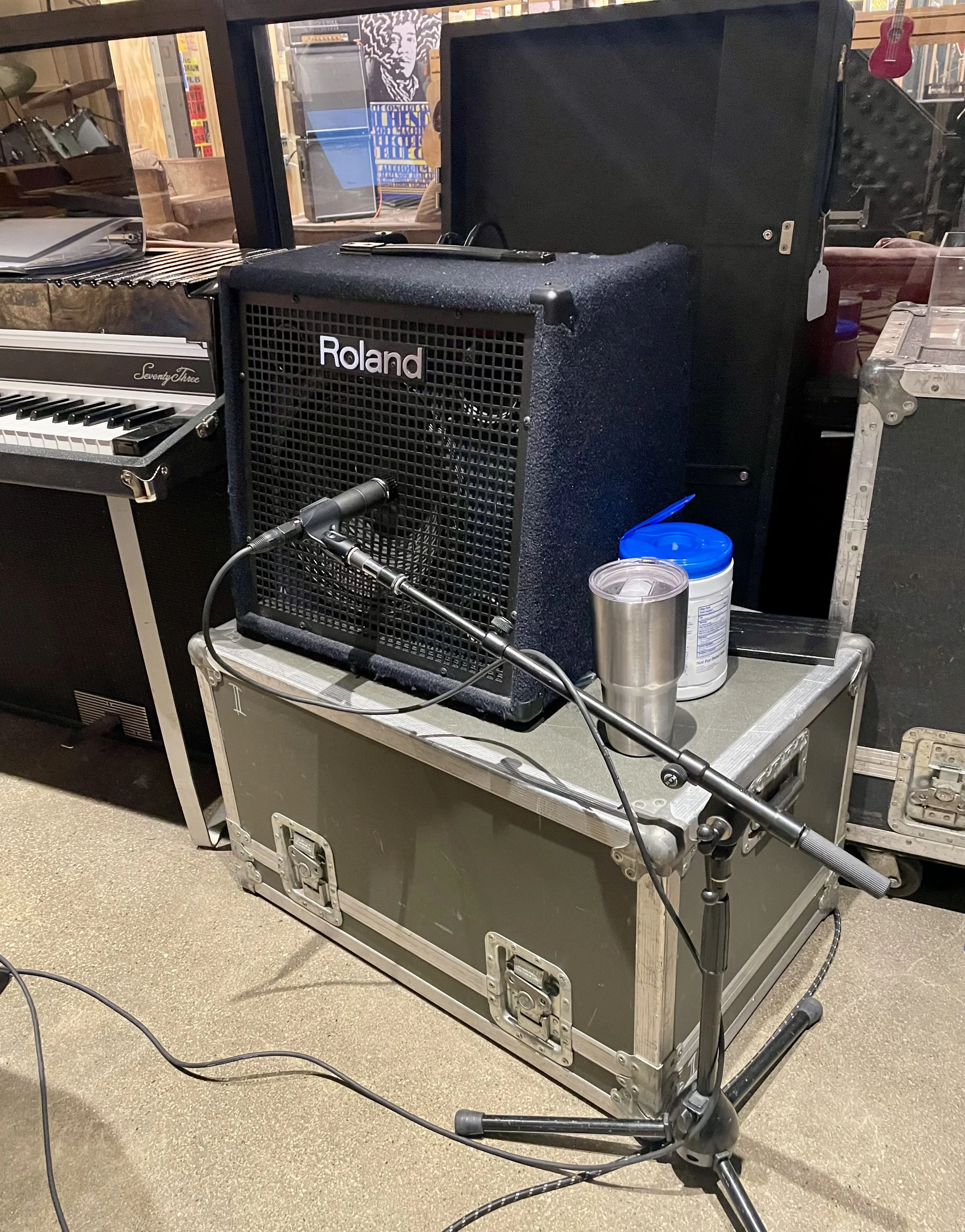
Location Recording
Rock & Roll Hall of Fame
About the Location Recording
I teamed up with Noah Schreiber to record the Rock & Roll Hall of Fame’s house band, ‘The Mechanics’, in their ‘Garage.’ To accomplish this, Noah checked out the ‘Pro Tools Kit’ from Cuyahoga Community College’s Recording Arts Technology equipment "cage” while I fronted the preproduction of when and where we would be accomplishing this recording. Working with the AV team at the Rock Hall, we set the date of October 7th and recorded ‘The Mechanics’ morning band practice. To limit the amount of equipment that we brought in, I coordinated borrowing microphones, stands, and cables from the Rock Hall and determined once on site how we would mic everything, ensuring that our talent was comfortable and we got the sounds that we needed all while being limited to 8 channels.
The Equipment
- Checked out from Tri-C -
‘Pro Tools Kit’
MacBook Pro Laptop
Focusrite Clarret 8Pre Interface
- Borrowed from the Rock Hall* -
SM58 x2
SM57 x1
AT4051 x2
AT5040 x1
Beta52 x1
Radial J48 Active DI x1
Mic Stands x7
XLR Cables x8
Y Cables (dual male to female) x2
*All instrumentation and amps were from the Rock Hall
The Process
Upon arrival, Noah set up the ProTools session and interface while I worked on mic placement. There were two vocalists, a lead and harmony, each with a guitar on stage right. I decided to use an AT5040 in a cardioid pattern pointed in between the two guitar amps, and positioned closer to the harmony vocal than lead. While is was not perfect, the mic picked up both guitars fairly balanced, and the harmony vocal could still be heard without being completely overpowered.
The rest of the setup was more straightforward. I used an SM57 to mic the Roland amp that the keys were going through and a Radial J48 Active DI for the bass. In order to maximise our channel use, we did a 3 mic set-up on the drums: AT5041s for overheads positioned in an A/B Spaced Pair, and a Beta 52 for kick. As for the two lead vocals, we used SM58s with Y Cables in order to send the signal to the Clarret 8Pre and their monitor feed.
Making the Final Product
After recording the entirety of the 3 hour band rehearsal, I cut and edited my favorite song, Mr. Crowley. After narrowing down what song I wanted to work on, I cleaned the tracks by cutting unnecessary noise, specifically in the intro and with the keys and the vocal. The vocalist was also playing the keys, so there was a lot of bleed form the keys into the vocal mic and vice versa.
The next thing I did was EQ. From previous experience editing live recordings, I find it works best if I fix any major issues, like guitar hum and rumble, but overall limit the amount of processing I do. If I try to isolate everything when the elements were all recorded in the same room, it often sounds worse than if I allowed there to be bleed. Additionally, if I over compress anything, bleed that was low level is brought up in the mix.
With that said, I did add light compress on the individual tracks to level it all out, and I added a de-esser on the vocal. After EQ and compression, I added a Church preset from the “Space” reverb in Pro Tools to my drums and bass, a medium room verb to the guitar and key tracks, and a touch of the “Dark yet Light Space” verb preset from FabFilter Pro-R 2 to the vocal.
To finish everything, on my master fader I used the Pultec EQH-2 EQ to boost the lows and high, I added a 2:1 compressor with a slow attack and release, and I added some medium room verb. Finally, I touched up levels with automation, automated levels of reverb on the individual tracks, and added a fade to the end of the song before bringing my mix to Soundcloud’s reccomended LUFS levels with iZotope RX 11.




